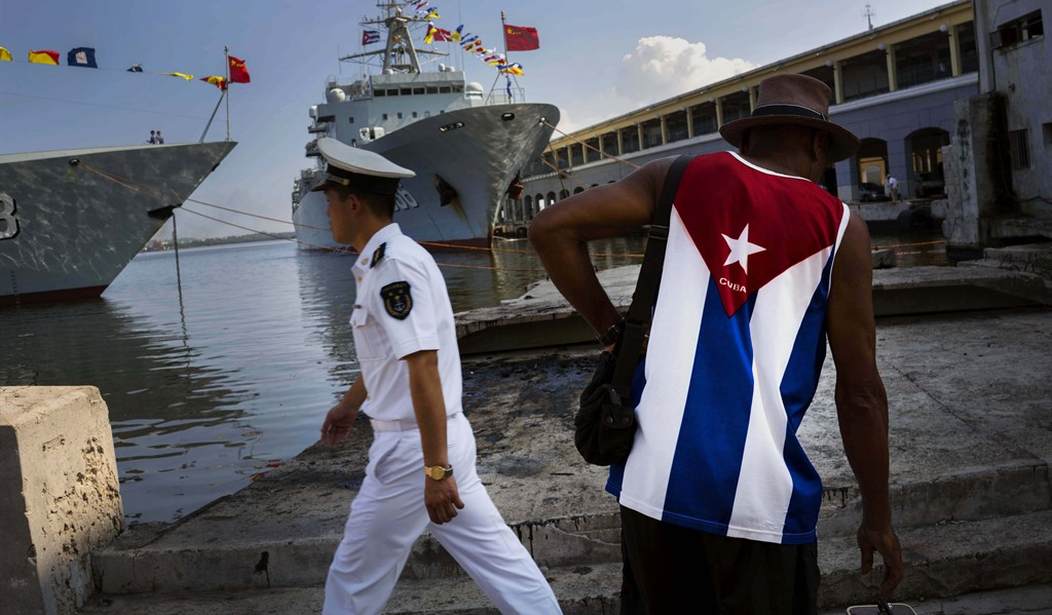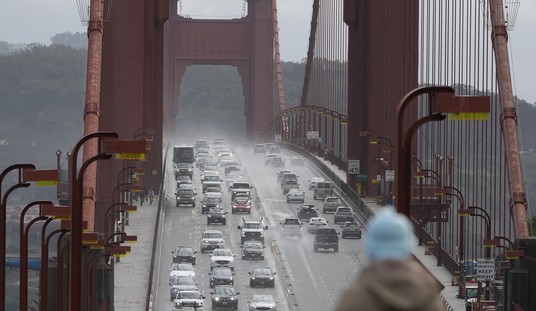According to the US Census Bureau, the US trade deficit with China in 2019 was $345.6 billion. That’s yuuuge, but at least it has been trending downward and was 18% less than 2018’s $419.5 billion deficit. What do you suppose China does with all that money? Their shopping list is long, and it includes continuing modernization of the People’s Liberation Army – Navy (PLAN).
In a single generation, the PLAN has developed capabilities that are direct challenges to the US Navy, including overhead surveillance satellites, long-range hypersonic missiles, and modern ships and aircraft. And the PLAN is deploying out of area on a regular basis, including to a Chinese naval base in Djibouti. The Chinese are also funding the construction of new seaports at Gwadar, Pakistan and Hambantota, Sri Lanka.
The US congress has tasked the Congressional Research Service to produce an annual report on the PLAN’s modernization efforts, and the latest update was published on Wednesday. Here is the report’s summary:
In an era of renewed great power competition, China’s military modernization effort, including its naval modernization effort, has become the top focus of U.S. defense planning and budgeting. China’s navy, which China has been steadily modernizing for more than 25 years, since the early to mid-1990s, has become a formidable military force within China’s near-seas region, and it is conducting a growing number of operations in more-distant waters, including the broader waters of the Western Pacific, the Indian Ocean, and waters around Europe. China’s navy is viewed as posing a major challenge to the U.S. Navy’s ability to achieve and maintain wartime control of blue-water ocean areas in the Western Pacific—the first such challenge the U.S. Navy has faced since the end of the Cold War—and forms a key element of a Chinese challenge to the longstanding status of the United States as the leading military power in the Western Pacific.
China’s naval modernization effort encompasses a wide array of platform and weapon acquisition programs, including anti-ship ballistic missiles (ASBMs), anti-ship cruise missiles (ASCMs), submarines, surface ships, aircraft, unmanned vehicles (UVs), and supporting C4ISR (command and control, communications, computers, intelligence, surveillance, and reconnaissance) systems. China’s naval modernization effort also includes improvements in maintenance and logistics, doctrine, personnel quality, education and training, and exercises.
China’s military modernization effort, including its naval modernization effort, is assessed as being aimed at developing capabilities for addressing the situation with Taiwan militarily, if need be; for achieving a greater degree of control or domination over China’s near-seas region, particularly the South China Sea; for enforcing China’s view that it has the right to regulate foreign military activities in its 200-mile maritime exclusive economic zone (EEZ); for defending China’s commercial sea lines of communication (SLOCs), particularly those linking China to the Persian Gulf; for displacing U.S. influence in the Western Pacific; and for asserting China’s status as the leading regional power and a major world power.
Consistent with these goals, observers believe China wants its navy to be capable of acting as part of a Chinese anti-access/area-denial (A2/AD) force—a force that can deter U.S. intervention in a conflict in China’s near-seas region over Taiwan or some other issue, or failing that, delay the arrival or reduce the effectiveness of intervening U.S. forces. Additional missions for China’s navy include conducting maritime security (including antipiracy) operations, evacuating Chinese nationals from foreign countries when necessary, and conducting humanitarian assistance/disaster response (HA/DR) operations.
The U.S. Navy in recent years has taken a number of actions to counter China’s naval modernization effort. Among other things, the U.S. Navy has shifted a greater percentage of its fleet to the Pacific; assigned its most-capable new ships and aircraft and its best personnel to the Pacific; maintained or increased general presence operations, training and developmental exercises, and engagement and cooperation with allied and other navies in the Indo-Pacific; increased the planned future size of the Navy; initiated, increased, or accelerated numerous programs for developing new military technologies and acquiring new ships, aircraft, unmanned vehicles, and weapons; begun development of new operational concepts (i.e., new ways to employ Navy and Marine Corps forces) for countering Chinese maritime A2/AD forces; and signaled that the Navy in coming years will shift to a more-distributed fleet architecture that will feature a smaller portion of larger ships, a larger portion of smaller ships, and a substantially greater use of unmanned vehicles. The issue for Congress is whether the U.S. Navy is responding appropriately to China’s naval modernization effort.
Here is a summary of the “key overview points concerning China’s naval modernization effort” from the report:
- China’s naval modernization effort, which forms part of a broader Chinese military modernization effort that includes several additional areas of emphasis, has been underway for more than 25 years, since the early to mid-1990s, and has transformed China’s navy into a much more modern and capable force. China’s navy is a formidable military force within China’s near-seas region, and it is conducting a growing number of operations in more-distant waters, including the broader waters of the Western Pacific, the Indian Ocean, and waters around Europe.
- China’s navy is, by far, the largest of any country in East Asia, and within the past few years it has surpassed the U.S. Navy in numbers of battle force ships, meaning the types of ships that count toward the quoted size of the U.S. Navy. ONI states that at the end of 2020, China’s will have 360 battle force ships, compared with a projected total of 297 for the U.S. Navy at the end of FY2020. ONI projects that China will have 400 battle force ships by 2025, and 425 by 2030.
- China’s naval ships, aircraft, and weapons are now much more modern and capable than they were at the start of the 1990s, and are now comparable in many respects to those of Western navies. ONI states that “Chinese naval ship design and material quality is in many cases comparable to [that of] USN [U.S. Navy] ships, and China is quickly closing the gap in any areas of deficiency.”
- China’s navy is viewed as posing a major challenge to the U.S. Navy’s ability to achieve and maintain wartime control of blue-water ocean areas in the Western Pacific—the first such challenge the U.S. Navy has faced since the end of the Cold War. China’s navy forms a key element of a Chinese challenge to the longstanding status of the United States as the leading military power in the Western Pacific.
- China’s naval modernization effort encompasses a wide array of platform and weapon acquisition programs, including anti-ship ballistic missiles (ASBMs), anti-ship cruise missiles (ASCMs), submarines, surface ships, aircraft, unmanned vehicles (UVs), and supporting C4ISR (command and control, communications, computers, intelligence, surveillance, and reconnaissance) systems. China’s naval modernization effort also includes improvements in maintenance and logistics, doctrine, personnel quality, education and training, and exercises.
- China’s military modernization effort, including its naval modernization effort, is assessed as being aimed at developing capabilities for addressing the situation with Taiwan militarily, if need be; for achieving a greater degree of control or domination over China’s near-seas region, particularly the South China Sea; for enforcing China’s view that it has the right to regulate foreign military activities in its 200-mile maritime exclusive economic zone (EEZ); for defending China’s commercial sea lines of communication (SLOCs), particularly those linking China to the Persian Gulf; for displacing U.S. influence in the Western Pacific; and for asserting China’s status as the leading regional power and a major world power.
- Consistent with these goals, observers believe China wants its navy to be capable of acting as part of a Chinese anti-access/area-denial (A2/AD) force—a force that can deter U.S. intervention in a conflict in China’s near-seas region over Taiwan or some other issue, or failing that, delay the arrival or reduce the effectiveness of intervening U.S. forces. Additional missions for China’s navy include conducting maritime security (including antipiracy) operations, evacuating Chinese nationals from foreign countries when necessary, and conducting humanitarian assistance/ disaster response (HA/DR) operations.
- Until recently, China’s naval modernization effort appeared to be focused less on increasing total platform (i.e., ship and aircraft) numbers than on increasing the modernity and capability of Chinese platforms. Some categories of ships, however, are now increasing in number. The planned ultimate size and composition of China’s navy is not publicly known. In contrast to the U.S. Navy, China does not release a navy force-level goal or detailed information about planned ship procurement rates, planned total ship procurement quantities, planned ship retirements, and resulting projected force levels.
- Although China’s naval modernization effort has substantially improved China’s naval capabilities in recent years, China’s navy currently is assessed as having limitations or weaknesses in certain areas, including joint operations with other parts of China’s military, antisubmarine warfare (ASW), long-range targeting, and a lack of recent combat experience. China is working to reduce or overcome such limitations and weaknesses. Although China’s navy has limitations and weaknesses, it may nevertheless be sufficient for performing missions of interest to Chinese leaders. As China’s navy reduces its weaknesses and limitations, it may become sufficient to perform a wider array of potential missions.
- In addition to modernizing its navy, China in recent years has substantially increased the size of its coast guard. China’s coast guard is, by far, the largest of any country in East Asia. China also operates a sizeable maritime militia that includes a large number of fishing vessels. China relies primarily on its maritime militia and coast guard to assert and defend its maritime claims in its near-seas region, with the navy operating over the horizon as a potential backup force.
While US attention is inwardly focused on containing the Wuhan virus and treating infected Americans, we cannot lose sight on the growing threat that the ChiComs pose on the world’s oceans. The PLAN is a “guarantor” of China’s Belt-Road Initiative and an enforcer of their efforts to dominate the world economically.
The end.













